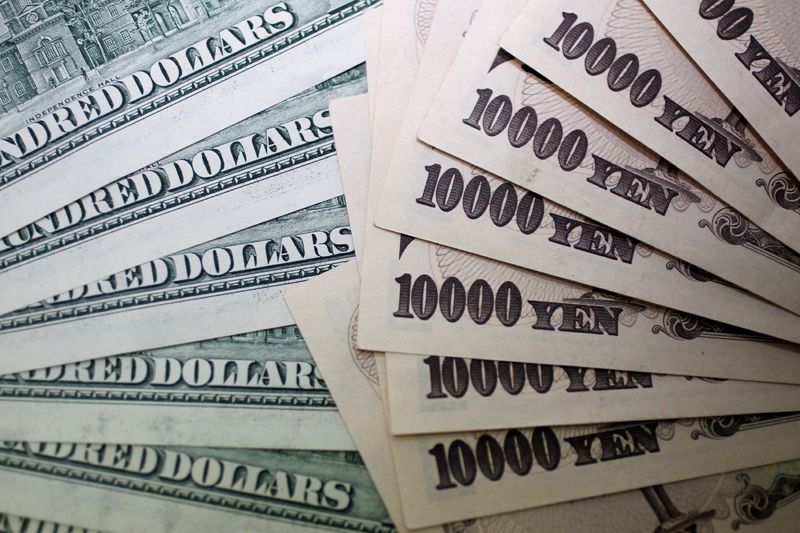Yen under pressure after Japan election
By Laura Matthews, Tom Westbrook, Stefano Rebaudo
NEW YORK/SINGAPORE (Reuters) -The yen hit three-month lows against the dollar on Monday, as Japan's ruling coalition's election loss raises political and monetary policy uncertainty, while the U.S. dollar headed for its biggest monthly gain since April 2022.
The dollar rose by as much as 1% to a high of 153.88, the yen's weakest level since late July. The yen, which recovered much of that loss, was last down about 0.3% on the dollar at 152.72, bringing the decline in October to 6.4%, the largest of any G10 currency.
"That (recovery) indicates to me that maybe the European and U.S. markets, relative to Japanese traders, are not seeing the political uncertainty in the same light," said Jane Foley, head of FX strategy at Rabobank London.
"What is also going to be very important for markets is whether or not there is a coalition in place relatively quickly so that there can be budget talks going into December."
A period of wrangling to secure a coalition is likely after Japan's Liberal Democratic Party and its junior partner Komeito won 215 lower house seats to fall short of the 233 majority.
Traders said the vote would likely result in a government without the political capital to preside over rising rates and could usher in another era of revolving-door leadership.
Shigeru Ishiba was Japan's fourth prime minister in a little over four years and further instability was widely expected to breed caution at the central bank, which meets to set rates this week.
Analysts at BNY said the next immediate target for dollar/yen would be 155 with 160 a likely line in the sand that would draw intervention from the finance ministry.
George Vessey, lead FX Strategist at Convera, in London said the coalition losing its majority for the first time since 2009 has added to the bearish Japanese yen profile as political uncertainty clouds the BoJ's outlook.
"The yen was already under pressure by rising global yields, while easing risk aversion had been encouraging yen-funded carry trades," said Vessey.
DOLLAR GAINS
Elsewhere, the dollar headed for its largest monthly rise in two and a half years against a basket of major currencies, driven by signs of strength in the U.S. economy. Bets on Donald Trump winning the presidency have also lifted U.S. yields in anticipation of policies that could delay interest rate cuts.
The U.S. dollar index has climbed 3.6% to 104.46 during October, its sharpest monthly rise since April 2022. It was last down 0.18% at 104.19.
Most analysts argued that markets are increasingly pricing in a Republican sweep, with Trump winning the presidency and his party controlling both chambers of Congress.
The euro meanwhile rose 0.22% to $1.0817, but was still down nearly 3% on the month.
Analysts said the single currency could drop further if the U.S. enacts a global baseline tariff, in addition to higher duties on China, and other countries retaliate. Much of the move would come from higher U.S. policy rates in response to the inflationary impact of tariffs.
Traders are also upping their bets that the European Central Bank could cut rates more aggressively, which is also weighing on the euro.
Investors are now focusing on the U.S. October employment report this week, which is likely to be affected by a strike at Boeing (NYSE:BA ) and two hurricanes that hit the U.S. Southeast.
The week ahead also includes inflation readings for Europe and Australia, gross domestic product data in the U.S. and purchasing managers' indexes for China.
"The diverging macro picture has led some investors to rethink their positioning as it relates to the future policy path of the respective central banks," said Vessey.
Source: Investing.com
